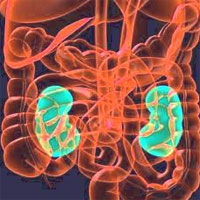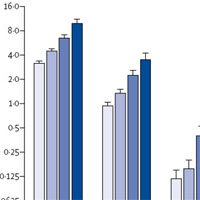Tag: study

The EXACT Protocol
The EXACT protocol: a multi-centre, single-blind, randomised, parallel-group, controlled trial to determine whether early oxygen titration improves survival to hospital discharge in adult OHCA patients. This study will determine... read more

The Effects of Family Functioning on the Development of Posttraumatic Stress in Children and Their Parents Following Admission to the PICU
Both children and parents have alarmingly high rates of acute stress and posttraumatic stress following the child's PICU admission. Although family function did not emerge as a predictor in this study, further understanding... read more

Long-term survival in patients with septic acute kidney injury is strongly influenced by renal recovery
In patients with sepsis, recovery by hospital discharge is associated with long-term survival similar to patients without AKI. Of the 1742 patients who survived to hospital discharge, stage 2–3 AKI occurred in 262 (15%),... read more

The Effect of Diaries Written by Relatives for ICU Patients on PTSD
The results of this study will inform ICU nurses about the effects, strengths and limitations of prompting relatives to author a diary for the patient. This will allow the diary intervention to be tailored to the individual... read more

Mortality and Cardiovascular and Respiratory Morbidity in Individuals with Impaired FEV1 (PURE)
The associations between the extent of forced expiratory volume in 1 s (FEV1) impairment and mortality, incident cardiovascular disease, and respiratory hospitalisations are unclear, and how these associations might vary... read more

Use of the Confusion Assessment Method in Multi-center Delirium Trials
Delirium occurs commonly in older adults and is associated with adverse outcomes. Multi-center clinical trials evaluating interventions to prevent delirium are needed. The Confusion Assessment Method (CAM) is a validated... read more

The Evolution of Lung Protective Ventilation in ARDS
Dr. Jesus Villar is Group Chief of the Center for Biomedical Research in Respiratory Diseases in Madrid and Senior Scientist of the Research Unit at the Hospital Universitario Dr. Negrin in Las Palmas, Spain. He is the Coordinator... read more

Loss of Sphingosine 1-Phosphate in Septic Shock is Predominantly Caused by Decreased Levels of HDL
Sphingosine 1-phosphate (S1P) is a signaling lipid essential in regulating processes involved in sepsis pathophysiology, including endothelial permeability and vascular tone. Serum S1P is progressively reduced in sepsis patients... read more

Optimizing Beta-Lactam Treatment in the ICU
The French Society of Pharmacology and Therapeutics (SFPT) and the French Society of Anesthesia and Intensive Care Medicine (SFAR) have released guidelines on the optimization of beta-lactam treatment in intensive care unit... read more

Repeated Ambulance Use is Associated with Chronic Diseases
There is a growing demand for emergency medical services (EMS) and patients are repeatedly transported by ambulance services. For many patients, especially those with chronic disease, there may be better ways of delivering... read more

Low Hand Hygiene Compliance in ICUs
Healthcare workers in intensive care units (ICUs) are regularly missing opportunities to clean their hands during the care of patients, despite its critical importance for infection control, according to new research being... read more

Catheter Type in Pulmonary Embolism Intervention
Catheter based interventions for pulmonary embolism is on the rise. The rise in mainly in patients who present with submassive PE. The intent of intervention is to reduce clot burden. This is done to improve acute symptoms... read more
What is the lowest change in cardiac output that transthoracic echocardiography can detect?
In critically ill patients, changes in the velocity-time integral (VTI) of the left ventricular outflow tract, measured by transthoracic echocardiography (TTE), are often used to non-invasively assess the response to fluid... read more

Hyperinvasive approach to out-of hospital cardiac arrest using mechanical chest compression device
Authors introduce and offer a protocol of a proposed randomized study enrolling patients with witnessed OHCA presumably of cardiac origin planned to be initiated in Prague in 2012. Study will compare hyperinvasive approach... read more




